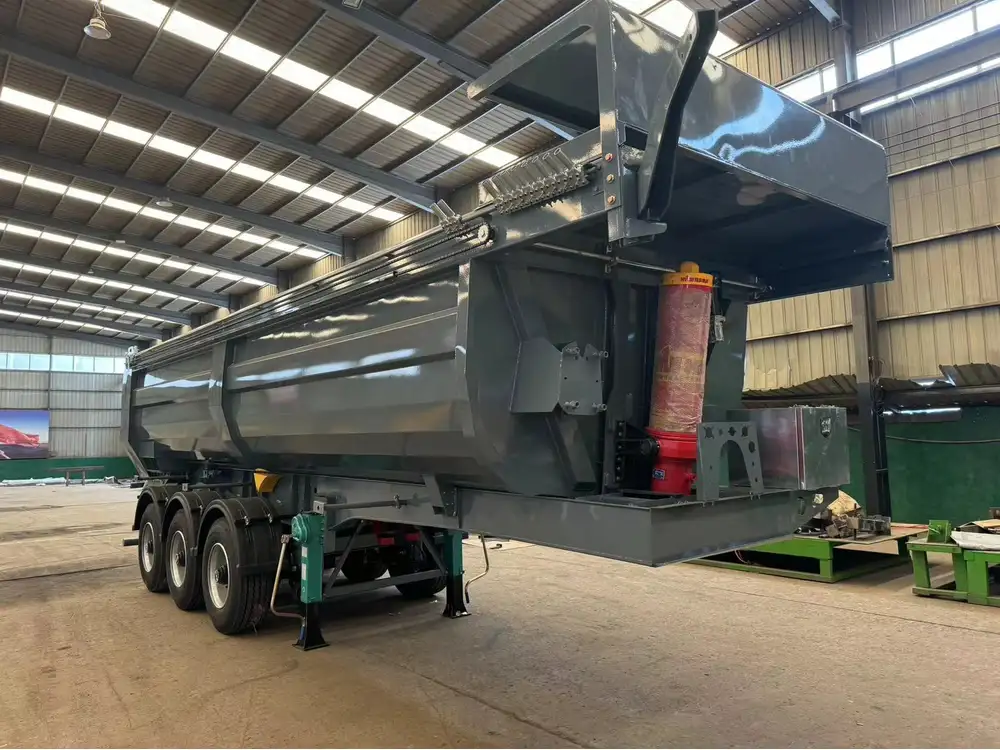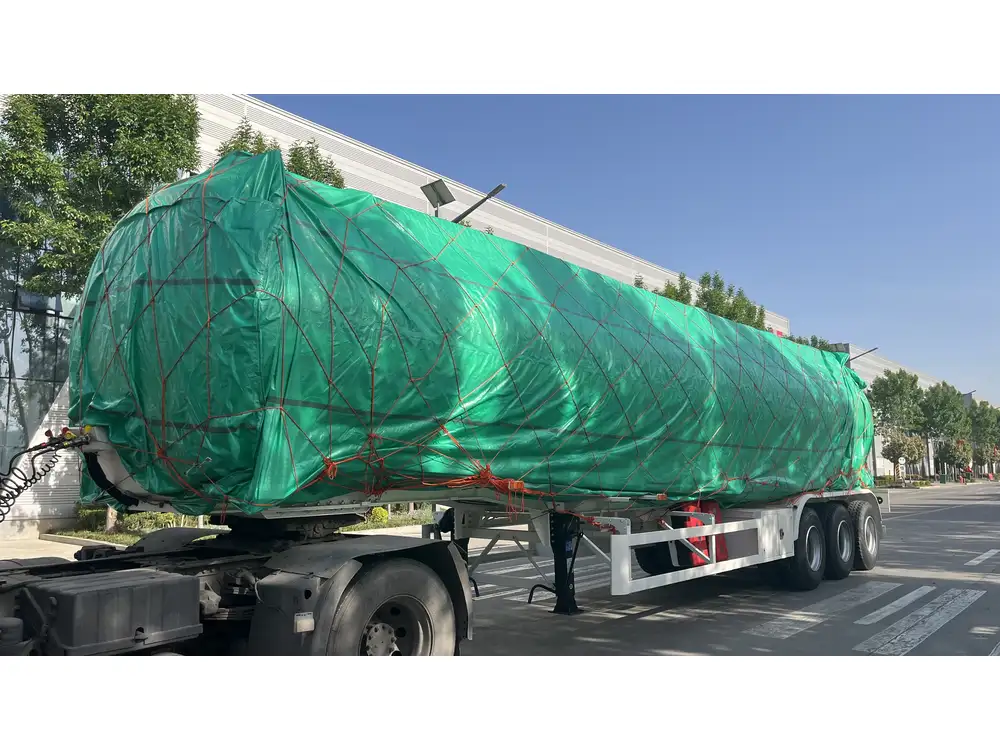Understanding how a semi-trailer can be unhitching instantaneously is crucial for vehicle operators, manufacturers, and safety engineers alike. The nuances of this process encompass mechanical engineering, safety standards, and practical applications. This guide delves into the intricate mechanisms that enable the unhitching of semi-trailers, offering insights into best practices, potential hazards, and advanced technologies designed to enhance efficiency and safety.
The Mechanics of Unhitching: A Deep Dive
Semi-Trailer Components Overview
Before exploring the unhitching process, let’s examine the foundational components of a semi-trailer and the tractor unit that facilitate this maneuver.
| Component | Description |
|---|---|
| Fifth Wheel | A plate that connects the trailer to the tractor. It allows for pivotal movement. |
| Kingpin | The protruding component on the trailer frame that locks into the fifth wheel. |
| Safety Latch | A mechanism preventing accidental uncoupling of the trailer from the tractor. |
| Landing Gear | Support legs that stabilize the trailer when unhitched. |

The Unhitching Process: Step-by-Step
Positioning the Vehicle: Proper alignment is essential. The tractor must be ideally positioned to detach the trailer from the fifth wheel.
Engaging the Landing Gear: Before disconnecting, operators lower the landing gear. This action provides stability and supports the trailer’s weight once detached.
Disengaging the Fifth Wheel Lock: The operator then engages the uncoupling mechanism, which releases the kingpin from the fifth wheel.
Moving the Tractor Forward: By carefully driving the tractor forward, the semi-trailer can be pulled away from the kingpin, completing the unhitching process.
Instant Unhitching Mechanisms: Advanced Technologies
Innovations in technology have led to the development of instant unhitching mechanisms, enhancing efficiency and safety during operations.
1. Automated Unhitching Systems
Modern trailers are equipped with automated systems that utilize hydraulic or air-release technologies. These systems allow drivers to disengage the trailer with the push of a button, minimizing manual effort and reducing the risk of human error.

2. Radio-Controlled Mechanisms
Some manufacturers offer radio-controlled devices that permit operators to unhitch trailers from a safe distance. This technology adds a layer of safety, especially in high-traffic or hazardous environments.
Safety Protocols During Unhitching
Importance of Compliance
Adhering to safety protocols can mitigate risks associated with the unhitching process. Below are essential safety guidelines every operator should follow:
- Pre-Inspection Checks: Inspect the fifth wheel and kingpin for wear and tear before unhitching.
- Clear the Area: Ensure the area around the tractor and trailer is clear of personnel and obstacles.
- Use of Safety Equipment: Employ proper safety gear, including gloves and steel-toed boots.
- Effective Communication: Employ hand signals or communication devices to coordinate the unhitching process effectively.

Common Issues Encountered During Unhitching
While the process may appear straightforward, various challenges can arise during the unhitching of semi-trailers.
1. Mechanical Failures
- Worn Components: Over time, wear on the fifth wheel or kingpin can hinder disengagement.
- Hydraulic Leaks: In automated systems, hydraulic leaks may prevent the uncoupling mechanism from functioning properly.
2. Environmental Factors
- Slippery Surfaces: Rain, ice, or mud can complicate the unhitching process, posing risks for slips and falls.
- Obstructed Views: Poor visibility due to environmental factors can lead to misalignment when executing the unhitch.

Tips for Effortless Unhitching
Employing Efficient Techniques
To achieve a smooth and instant unhitching experience, consider the following recommendations:
- Regular Maintenance: Schedule routine maintenance checks on the fifth wheel and kingpin to ensure optimal functionality.
- Training and Certification: Ensuring that all operators are adequately trained on unhitching techniques can significantly improve safety and efficiency.
- Familiarization with Equipment: Operators should familiarize themselves with specific trailer types and their unique unreeling mechanisms.
The Role of Regulations and Standards
Regulatory bodies play a vital role in ensuring the safety and efficiency of semi-trailer operations. Key standards include:
| Regulation Body | Key Focus |
|---|---|
| FMCSA | Establishes guidelines for vehicle operation and safety. |
| DOT | Enforces regulations regarding vehicular design and reliability. |
| SAE International | Develops standards for vehicle engineering and technology. |
Understanding these regulations helps manufacturers and operators ensure compliance, maintaining safety and efficiency during operations.

Future Trends in Semi-Trailer Unhitching Technology
The transportation industry continually evolves, particularly in the realms of efficiency and safety. Emerging trends include:
1. Smart Unhitching Technologies
With the advent of artificial intelligence (AI) and machine learning, smarter systems are being developed. These innovations can monitor the condition of semi-trailers and predict wear before mishaps occur.
2. Integration with Fleet Management Systems
Real-time data tracking allows operators to manage unhitching processes alongside fleet logistics, enhancing scheduling and coordination.

3. Eco-Friendly Solutions
The shift toward more sustainable practices has influenced trailer design. Modern materials and designs focus not only on structural integrity but also on reducing the carbon footprint during transport.
Conclusion
The process of unhitching a semi-trailer, though seemingly straightforward, encompasses a wide array of technical, mechanical, and regulatory considerations. By understanding the mechanics involved, adhering to safety protocols, and embracing emerging technologies, manufacturers and operators can enhance not only their efficiency but also the safety of their operations. Staying informed about best practices, potential issues, and future trends ensures that the process remains reliable, effective, and safe in an industry constantly striving for improvement.
This comprehensive guide serves as a valuable resource for manufacturers and operators alike, highlighting the essential practices and technologies that define the unhitching process, while addressing common challenges and solutions. Maintaining optimal safety and performance helps mitigate risks and guarantees successful operations on the road.



